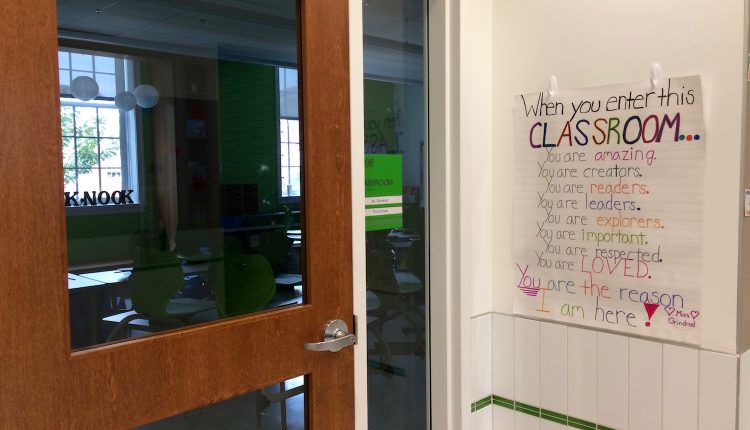Hanseul Kang: In DC education, real progress requires continued commitments to bold policy decisions
A decade and a half ago, the District of Columbia lagged far behind the rest of the country in education. Our results on the National Assessment of Educational Progress (NAEP) consistently ranked us at the bottom in reading and math nationwide — we weren’t even in shouting distance of other states. But today, I’m proud to say we are in the game. DC continues to be the fastest-improving state on “The Nation’s Report Card,” and our students continue to close gaps with local and national peers.

This is huge news for DC. Because of our progress over the past decade, we have jumped ahead of five states in fourth-grade reading, and ahead of six states and tied for seventh in fourth-grade math. We were also the only state this year to make gains in eighth-grade reading — while 31 other states saw declines.
Some have questioned whether these gains are due to changing demographics. Let me be clear: That question does a disservice to teachers and school leaders who are working tirelessly to provide rigorous instruction and improve student outcomes. It’s damaging to students of color and students experiencing economic disadvantage across the District who are working hard to meet the high standards we’ve set for them. And it’s based largely on speculation, not real data. It also overlooks research by EmpowerK12 and the Urban Institute, which both came to the same conclusion: Changing student demographics may contribute but don’t come anywhere near to explaining the full level of improvement DC has seen over time.
Based on my experience and observations, it’s clear to me what sets DC apart from the rest of the nation. Our results show that when you set high expectations and stay the course, students — led by talented, skilled educators dedicated to their success — will rise to the challenge. The 2019 NAEP results show me that the bold policy decisions and significant investments we have made over more than a decade are driving our improved student outcomes.
While other states abandoned policies intended to improve the quality of education, DC stayed the course or doubled down.
While other states have experienced confusion over multiple revisions of academic standards and changes to assessments, DC embraced rigorous expectations for what our students should learn. In adopting high-quality standards and assessments, DC received broad support from a range of key stakeholders across the city who know our students want to — and can — take on challenging coursework that will prepare them for the future.
While other states struggle to fairly compensate and support teachers, DC continues to make significant investments in its educator workforce and takes every opportunity to celebrate outstanding teachers, involve them in policy decisions, and support their growth through high-quality professional development. Ten years after implementing DC Public Schools’ revolutionary educator evaluation process, DC now has some of the highest-paid teachers in the nation. Through competitive salaries and innovative partnerships, DC is retaining more of its most effective teachers, particularly in its highest-need schools.
While other states cut funding for early childhood education or do not offer preschool programming, DC recognized the value of high-quality preschool and began implementing universal, full-day pre-kindergarten for both 3- and 4-year-olds. We continue to make historic investments in child care that improve quality and access, so that more young learners can get off to a strong start in elementary school and working families can re-enter the workforce sooner.
DC has also made a commitment to transparency, and we have backed up that commitment by equipping our families, school leaders and partners with high-quality and actionable data. User-friendly tools such as the DC School Report Card help celebrate successes, identify areas for growth, and shape policy by giving DC leaders and educators a common set of facts to compare and evaluate schools. This transparency has also been incredibly valuable to our families as they decide which schools are best for their children, and work to improve outcomes in their school communities.
The collective belief that DC has shown in our students has led to sustained academic progress over the past decade, forming a firm foundation on which we must build for the future. We know we have much more challenging work ahead of us to ensure all DC students, regardless of background or ZIP code, can benefit from the improvements we are making.
Because of what we’ve already accomplished, I am optimistic and confident we can continue this progress and ensure every child in the District has access to the high-quality education they rightfully deserve. DC, let’s continue to show the nation what is possible.
Hanseul Kang is the DC state superintendent of education.
About commentaries
The DC Line welcomes commentaries representing various viewpoints on local issues of concern, but the opinions expressed do not represent those of The DC Line. Submissions of up to 850 words may be sent to editor Chris Kain at chriskain@thedcline.org.



Regarding the two studies cited in the article. The Urban Institute report states “To be sure, our analysis does not account for all potentially important demographic factors. In particular, we do not include any measures of family income.” Empower K-12 has received substantial funding from OSSE over the past year.
Gentrification alone does not account for all the city’s growth. But, it is disingenuous to ignore the role that it plays when DC is among the fastest gentrifying cities in America (https://www.washingtonpost.com/transportation/2019/03/19/study-dc-has-had-highest-intensity-gentrification-any-us-city/). It is also alarming that our city’s leaders are failing to acknowledge that achievement gaps – between rich and poor as well as between white and black students – have grown since 2002/2003.